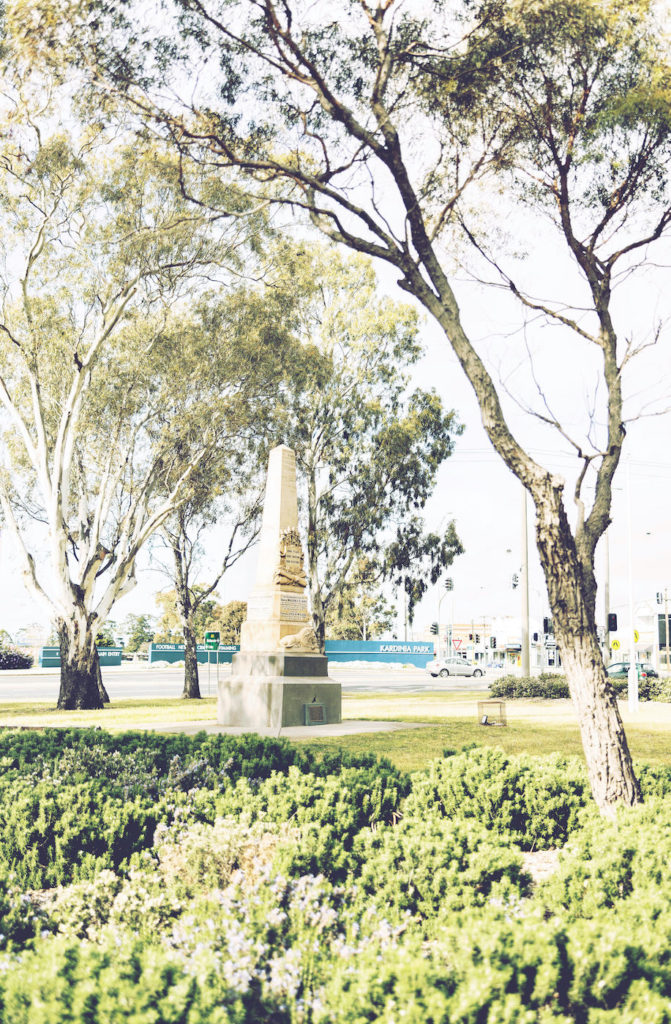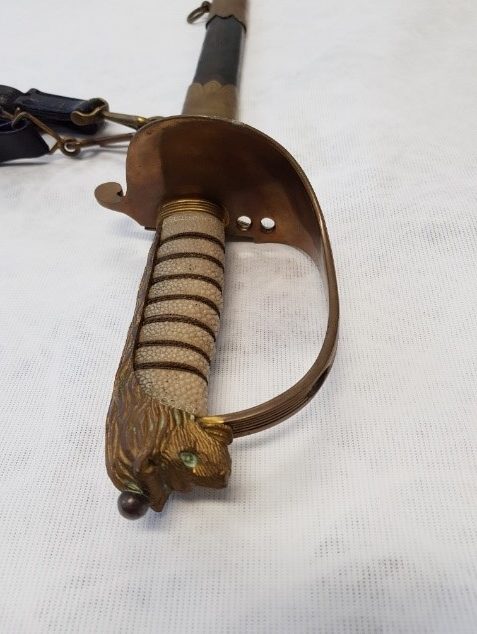Coincidentally Our Heritage, Our Collection report was released and endorsed by Council just before ANZAC Day 2020. In its entirety, the collection reflects and honours the important contribution of Geelong’s residents to wartime activity.
It was also timely to showcase the recent acquisition of the Charles “Tug” Wilson collection donated to the City. From First World War weaponry to memorials, the collection gives Geelong residents many tangible ways to reflect on our war history.
Navy Postcard
This Navy Postcard was the property of Charles Tug Wilson. These postcards were distributed to time poor sailors in order to pass on a message to a loved one without having to take too much time to think of a message. It shows the ways in which defence force staff interacted with the home-front. Did receiving such a postcard carry the same affection as a hand-written postcard?

Service Record of Charles Wilson
Certificate
This paper certificate details the service record from Charles “Tug” Wilson who was training in the Australian Royal Navy during World War 1. It states the vessels he served on and for what period of time. Ships included are the HMS Vivid, HMS Europa, HMAS Platypus, HMS Apollo and HMAS Powerful. Wilson switched between both Australian and British ships during his time of service.
Boer War Memorial
LaTrobe Terrace
The monument was erected by public subscription in 1902 as a historical mark of the Boer War and the Proclamation of Peace on the 2nd of June 1902. The obelisk also commemorates the four Geelong men who lost their lives in the Boer War; Trooper Walter E. Clark, Corporal Eric A. Wilson, Alston T. Dickinson and Francis James.
Badges
from Geelong Peace Celebrations
Fundraising badge produced for the Geelong Peace Celebrations in 1919. Many badges were produced at this time for popular causes. Such badges were sold in trams, buses, funds. Funds raised were given to those affected by the War in the Geelong and District region.

Service Medals
These six medals are part of the Charles “Tug” Wilson collection. From left to right the medals read; MBE, 1914-5 Star, British War Medal WWI, Victory Medal WWI, War Medal 1939-45, and Australian Service Medal 1939-45. The medals were awarded to Wilson in recognition of extensive service to the Royal Australian Navy, achieving the final rank of Lieutenant Commander while serving the nation across multiple decades and conflicts.

Scabbard
In 1913 the Royal Australian Navy inherited the practice of wearing swords for formal dress from the Royal Navy.This sword belonged to Lieutenant Commander Charles “Tug” Wilson. Wilson began with the Royal Navy in World War I and served right through to the Korean War. The sword was well maintained and cared for while it was in service. In recent times, the brass on the hilt is showing signs of oxidisation. This is due to chemical reactions from polishing products historically used on this item during its military service.
West Geelong War Monument
The West Geelong War Monument was erected by the citizens of Geelong West to commemorate those who served in World War I. The memorial was unveiled by the Governor, Lord Somers on 18 September 1927. The memorial was dedicated by the Reverend J.J. Booth.
The Marching Kazoo Band
Details the recollections of George Mitchell during World War II and his time in the Newtown and Chilwell Kazoo Band. These stories were part of the “Memory Bank” project that recorded stories of changing places across Geelong and surrounding areas. Film by Malcolm McKinnon.
A Sea of Faces
Details Patricia Gilham’s excitement in being a participant in the 1945 Miss Geelong competition. Film by Malcolm McKinnon.
Submarines and Auxiliary
Image
Image showing HMAS Platypus (1917) with three of the Royal Australian Navy’s J class submarines. These submarines were based at Osborne House in Geelong between 1920-1922. The Platypus was an auxiliary ship used as a mobile base for submarines.
The Platypus was originally ordered prior to World War I to support the submarines AE1 and AE2, however, it was not completed until after both submarines had been lost. Therefore, the ship was lent to the British’s Royal Navy until the Australian Navy inherited 6 submarines from the British after the competition of World War I.

East Geelong War Memorial
The East Geelong War Memorial was erected in 1921 to commemorate the servicemen from the East Geelong, St Albans and Moolap districts who lost their lives in action in World War I. It bears forty-five names of soldiers who died in conflict.











